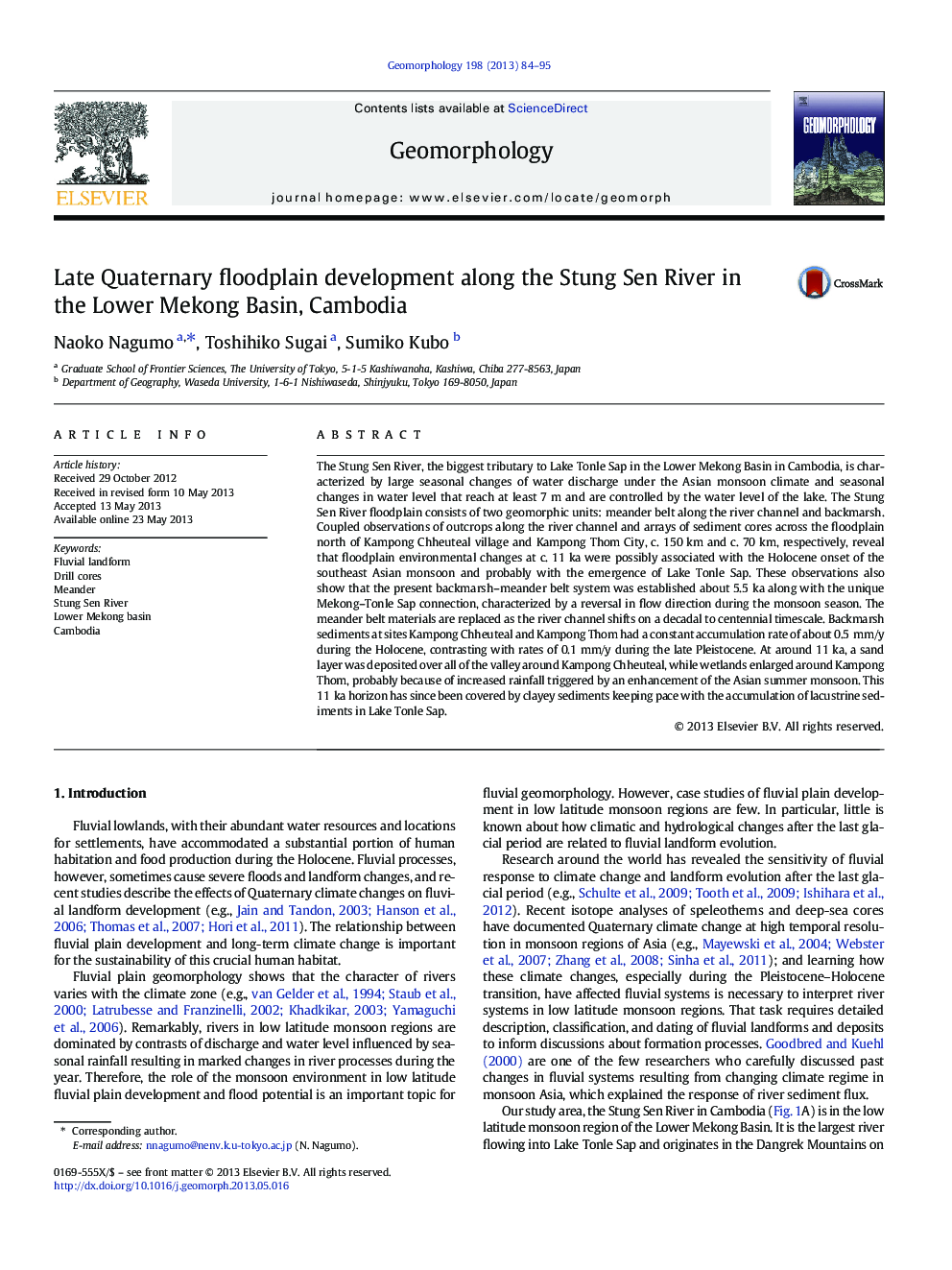| Article ID | Journal | Published Year | Pages | File Type |
|---|---|---|---|---|
| 4684745 | Geomorphology | 2013 | 12 Pages |
The Stung Sen River, the biggest tributary to Lake Tonle Sap in the Lower Mekong Basin in Cambodia, is characterized by large seasonal changes of water discharge under the Asian monsoon climate and seasonal changes in water level that reach at least 7 m and are controlled by the water level of the lake. The Stung Sen River floodplain consists of two geomorphic units: meander belt along the river channel and backmarsh. Coupled observations of outcrops along the river channel and arrays of sediment cores across the floodplain north of Kampong Chheuteal village and Kampong Thom City, c. 150 km and c. 70 km, respectively, reveal that floodplain environmental changes at c. 11 ka were possibly associated with the Holocene onset of the southeast Asian monsoon and probably with the emergence of Lake Tonle Sap. These observations also show that the present backmarsh–meander belt system was established about 5.5 ka along with the unique Mekong–Tonle Sap connection, characterized by a reversal in flow direction during the monsoon season. The meander belt materials are replaced as the river channel shifts on a decadal to centennial timescale. Backmarsh sediments at sites Kampong Chheuteal and Kampong Thom had a constant accumulation rate of about 0.5 mm/y during the Holocene, contrasting with rates of 0.1 mm/y during the late Pleistocene. At around 11 ka, a sand layer was deposited over all of the valley around Kampong Chheuteal, while wetlands enlarged around Kampong Thom, probably because of increased rainfall triggered by an enhancement of the Asian summer monsoon. This 11 ka horizon has since been covered by clayey sediments keeping pace with the accumulation of lacustrine sediments in Lake Tonle Sap.
